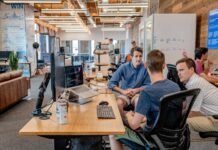Currently in an era of rapidly advancing technology, artificial intelligence is a field that is predicted to be even more revolutionary than electricity. Almost every single field, from medicine, to finance, to robotics, to politics, have been finding ways to incorporate the extraordinary technology to make their operations run more smoothly and effectively; and now, there has been a recent breakthrough of artificial intelligence in astronomy, called Morpheus. Morpheus is a technology that has the ability to detect and classify galaxies automatically from images taken from telescopes that survey the depths of space and had been published only around a month ago, on May 12, 2020.
It works by assuming that every image is an empty black screen, and then analyzing it pixel by pixel to detect and understand any objects that disrupt the emptiness of the black screen. After these objects are detected, they are classified as their type based on whether their shape is a disc, spheroid, or irregular; the deep learning abilities of the neural networks of Morpheus allow for the intelligent technology to detect galaxies much, much farther than humans can.
After Morpheus’s analysis is completed, it produces brand new images in which different parts of the sky are highlighted in different colors, based on a color key that the group of scientists had embedded into its system. These colors allow for the classification of the different objects found in the sky, along with point sources and different types of galaxies.
Morpheus had been trained using the information from the 2015 study that human astronomers had conducted, in which 10,000 galaxies in the Hubble Space Telescope had been classified. The research team that created Morpheus then applied the technology to image data that had been taken by Hubble studies, finding that it had an astounding accuracy rate of 82-98%, depending on the class of objects that it is analyzing. The only times that the technology may struggle are if the pictures are blurry, or a particularly peculiar shape.
Before the creation of Morpheus, many other astronomers had attempted to create artificial intelligence technologies that would be able to perform similar operations, however, they were nowhere near as advanced or successful. These technologies would have been created by simply adapting existing imaging technologies, meaning that they would not have the ability to classify raw images. Rather, these technologies would have to be fed curated images of the galaxies, making the entire process ineffective and somewhat inaccurate. Morpheus has the ability to classify raw images, automatically, allowing for the entire procedure to be extremely effective.
This technology has incredible potential and may allow for astronomers and astrophysicists to fully understand how galaxies are formed, and what may account for their many various shapes. The team that had coded for this framework is currently working to adjust the technology in such a way that it becomes easier to use, and could potentially be adapted by various different astronomy observatories and research programs. This technology will be very useful when the Legacy Survey of Space and Time (LSST) will begin in 2022 when the Vera C. Rubin Observatory, in Chile, has been built.
It is predicted that the LSST will take over 800 panoramic images nightly, using a 3.2 billion pixel camera, to be able to capture as much of the sky as possible; the entire visible sky will be recorded twice each week at that rate. This would make it impossible for humans to be able to go through and deeply analyze every image produced, which is where Morpheus would come into play.
The research team working on this incredulous technology hopes that within these two years, they will have successfully adapted this technology to be able to function in this observatory and be able to be understood by astronomy teams around the world. Morpheus will bring revolution to the understanding of space history and galaxy evolution as humanity knows it.



















